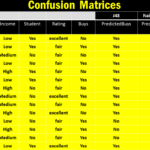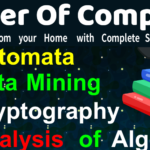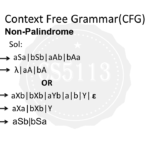What is Data Mining
Data mining is the process of finding patterns, relationships, and useful information from large data sets using a variety of techniques. It is a key part of data analytics that helps organizations turn unstructured data into actionable insights.
Key Concepts
Data Collection: This is the initial stage where data is gathered from different sources. Sources might include databases, data warehouses, or external datasets.
Data Cleaning: Raw data often contains errors, inconsistencies, or missing values. Data cleaning involves correcting or removing these issues to ensure the quality of the data.
Data Integration: Sometimes data comes from multiple sources. Data integration combines these sources into a unified dataset for analysis.
Data Transformation: This step involves converting data into a suitable format for mining. This could include normalization (scaling data), aggregation (combining data), or other preprocessing steps.
Data Mining Techniques:
- Classification: Assigning items to predefined categories (e.g., spam vs. non-spam emails).
- Regression: Predicting a continuous value based on input data (e.g., predicting house prices).
- Clustering: Grouping similar items together without predefined categories (e.g., customer segmentation).
- Association Rule Learning: Discovering relationships between variables (e.g., customers who buy bread often buy butter as well).
- Anomaly Detection: Identifying unusual or rare events (e.g., fraud detection).
Evaluation: After mining, the results need to be evaluated for accuracy and usefulness. This often involves comparing predictions with actual outcomes or validating clusters.
Deployment: The final model or insights are deployed in a real-world application. This might involve integrating findings into decision-making processes or creating visualizations for stakeholders.
Applications of Data Mining
- Marketing: Understanding customer behavior, targeting specific customer segments, and improving marketing strategies.
- Finance: Detecting fraudulent transactions, assessing credit risk, and optimizing investment portfolios.
- Healthcare: Predicting disease outbreaks, personalizing treatment plans, and improving patient care.
- Retail: Analyzing purchase patterns, optimizing inventory, and enhancing customer experience.
- Manufacturing: Predicting equipment failures, improving quality control, and optimizing supply chains.
Tools and Technologies
Data mining can be performed using various software tools and technologies, including:
- Programming Languages: Python, R
- Software: RapidMiner, KNIME, Weka
- Libraries and Frameworks: scikit-learn, TensorFlow, Apache Spark
Challenges
- Data Privacy: Ensuring sensitive information is protected.
- Data Quality: Dealing with incomplete or inconsistent data.
- Complexity: Handling large and complex datasets can be computationally intensive.










